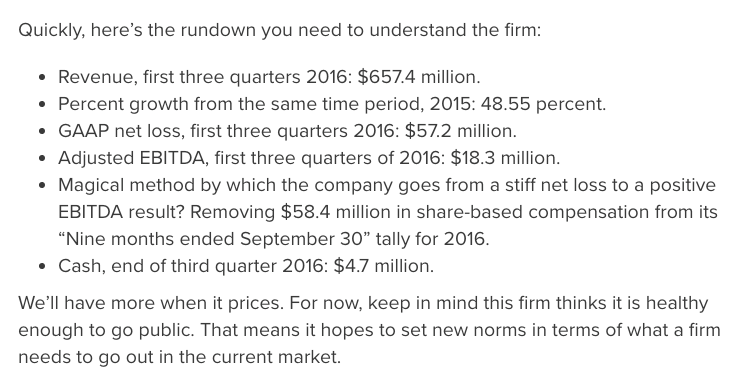Editor’s Morning Note: What happens when your IPO is just ok?
Area Pupper empathizes with your IPO pricing dilemma.
Happy Friday everyone, and welcome to what should be the final IPO Watch of the year. Today we’re chatting about Trivago.
The company went public today at $11 per share, a number that fell under expectations. The firm also had to constrain the number of shares it sold in the offering. According to media reports, Trivago had originally hoped to sell a greater 28.5 million shares at a higher $13 to $15 price. Some companies price above their range; pricing below is not bullish.
Today the firm is up a few points up from $11, but only managed a brief moment above $12. It’s a successful, if muted IPO.
Why? Let’s find out.
Warnings, Shots
If you can rewind back to November, Mattermark had some less-than-kind words concerning the company after it filed to go public. To wit:

When you are that broke, and your losses are that notable, things can seems a bit out of whack. Therefore, Trivago’s muted first day performance doesn’t feel odd.
But it’s that last paragraph that I want to focus on. Trivago’s IPO helps us understand where the lower bar is for IPOs, at least today.
In fact, the company’s debut shows us a different path to going public that breaks our normal formula of asking ‘did the company price its IPO too low, sacrificing cash-raised for first-day-pop’ after its first-day result.
With Trivago you need not ask that question. Instead, you can simply say that the company added several hundred million dollars to its coffers and has started its life as a fully-mature corporate entity.
And here we are, throwing shade on the company. Perhaps you and I have become too enamored in companies that pop big, and cause a stir. This was a quieter affair.
To further our self-mockery, check the trading patterns of recent, media-friendly IPOs like Twilio and Nutanix. Up, up, up and then? You can read a chart.
All that is to welcome Trivago to the public arena.
Now, please convince some other companies to follow suit.